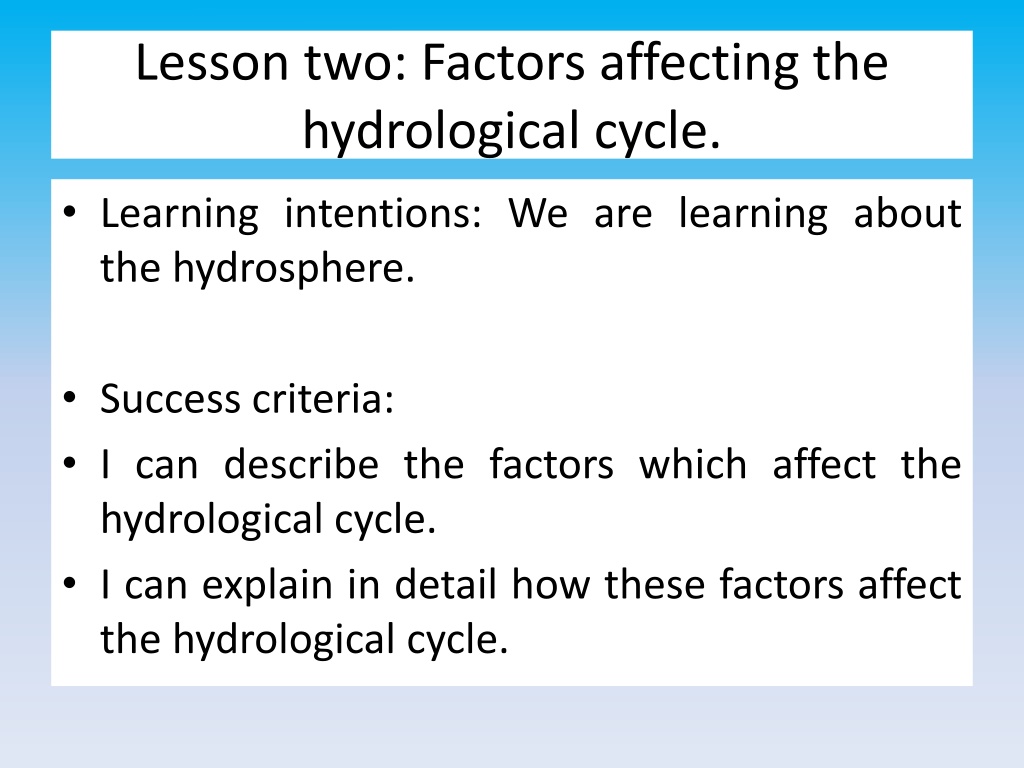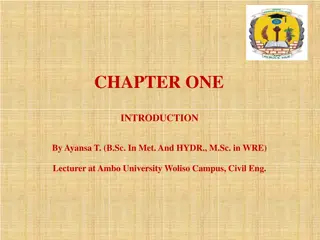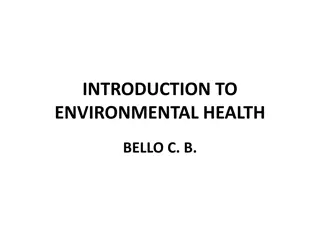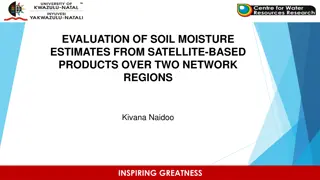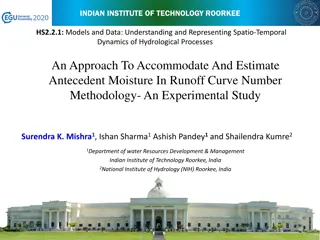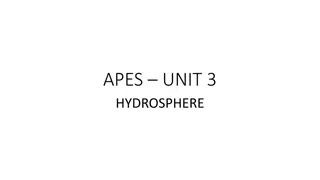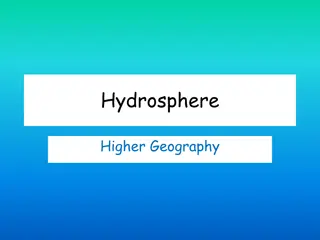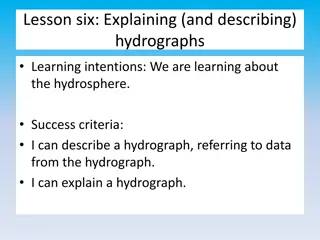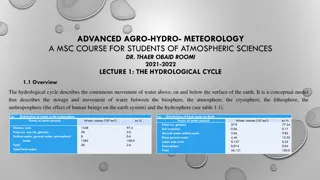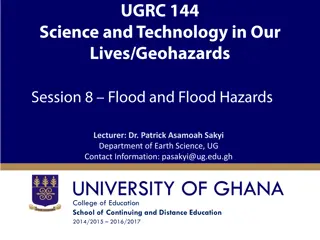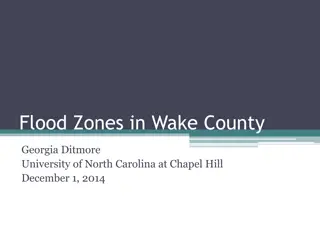Factors Affecting the Hydrological Cycle: Understanding Physical and Human Influences
The hydrological cycle is influenced by both physical and human factors. Physical factors such as relief, vegetation, basin size, rock type, soil type, and climate all play a role in shaping the movement of water through the cycle. Human activities like forestry, urbanization, deforestation, mining, dam construction, and irrigation also impact the hydrological cycle. Understanding these factors is crucial for managing water resources sustainably.
Download Presentation

Please find below an Image/Link to download the presentation.
The content on the website is provided AS IS for your information and personal use only. It may not be sold, licensed, or shared on other websites without obtaining consent from the author. Download presentation by click this link. If you encounter any issues during the download, it is possible that the publisher has removed the file from their server.
E N D
Presentation Transcript
Lesson two: Factors affecting the hydrological cycle. Learning intentions: We are learning about the hydrosphere. Success criteria: I can describe the factors which affect the hydrological cycle. I can explain in detail how these factors affect the hydrological cycle.
Starter In pairs, describe what these human activities are and then explain why they are carried out. Forestry Urbanisation Deforestation Reservoirs/Dam building Irrigation Mining
Factors affecting the hydrological cycle The hydrological cycle as we discovered in the last lesson is a closed system which is powered by the sun. However, it can be affected by both physical and human factors.
Physical factors Relief the steeper the slope, the more quickly water will reach the river. Vegetation (Type and density) the more vegetation there is, absorbed/intercepted and then transpired back into the atmosphere. the more will be
Physical factors Size of basin water comes from a bigger area so more water is in the cycle compared to other areas. Rock type Some rocks are more permeable than others (allow water to pass through them). Some are impermeable. Some rocks are better at storing water.
Physical factors Soil type sandy soils cause less flooding, whereas clay soils cause more flooding. Climate Prolonged rainfall results in saturation Intense storms lead to more surface run off Snowfall water is held in storage and when it melts increases run off. If ground is frozen, water cannot infiltrate it.
Human factors Specifically for this topic, we are more concerned about how humans can affect the hydrological cycle.
Human factors 1. Forestry 2. Urbanisation 3. Mining 4. Deforestation 5. Reservoir/dam building 6. Irrigation Notes on these in your booklet
Past Paper Question Study the diagram below. Explain how human activities, such as those shown on the diagram, can impact on the hydrological cycle.
Forestry The planting of trees, usually for economic purposes e.g. Christmas trees. Trees are then felled leaving ground exposed. When the trees are planted, this increases interception as the number of trees has increased, thus increasing the total surface area of leaves which raindrops land on.
Reservoirs/Dam building By building dams and reservoirs, water will be stored and therefore less water will flow over the surface and through underground stores, back to the river. This can result in a lowering of the water table. They can also have an impact on where it rain. Dams and reservoirs increase evaporation, resulting in increased cloud formation in these areas. Cloud formation would therefore be altered, changing levels of precipitation.
Urbanisation This is the expansion of towns and cities. This will reduce the amount of natural vegetation available and replace it with impermeable surfaces and drains. This will increase surface runoff and also evaporation, leading to higher river levels. It will also reduce the water table as less water is being returned to underground stores.
Mining The extraction of ores and minerals. removing vegetation, digging or blowing large holes in the ground. Will cause the silting up of lakes, reservoirs and rivers reducing the storage in these areas. It may also result in a reduced vegetation cover, leading to increased runoff and decreased evapotranspiration. This involves then amount of
Deforestation The cutting down or burning of trees. Increases the amount of runoff water and it decreases evapotranspiration, decreasing cloud formation. As there are no longer tree roots to take up ground water or precipitation, this leads to more extreme river flows. therefore leaves to intercept
Irrigation This underground therefore lowering the water table. It also places more water in surface canals/ditches, increase evaporation transpiration. Furthermore, given irrigation improves plant growth, water will be removed from the hydrological cycle as crops grow. takes water water from stores stores i.e. will and which
Task 2 Suggest how human activities such as those written below can impact on the hydrological cycle. (6) Deforestation, Forestry, Irrigation, Dam building, Reservoirs, Urbanisation and Mining. You must refer to at least two human activities. Try not to repeat yourself i.e. You can only get a mark for explaining how something affects the water table once.
Irrigation Deforestation Taking water from a river or ground water reduces river flows Lowers water table Increases evaporation due to water being stored in ditches and canals Cutting down trees increases run off Decreases transpiration Changes cloud formation impacting on local rainfall patterns Less absorption Less interception More extreme river flows Urbanisation Removal of vegetation and replace with surfaces such as tarmac Higher river levels Due to overland flow being sped up and less water infiltrates the soil impermeable Mining Silting up of lakes and reservoirs leads to reduced storage Less vegetation cover so more run off Altered cloud formation due to higher rates of evaporation. Evaporation increases Percolation decreases Less water in ground water so lowers water table.
Success criteria I can describe the factors which affect the hydrological cycle. I can explain in detail how these factors affect the hydrological cycle.
Plenary Explain each of these components of the hydrological cycle: Infiltration Percolation Advection
